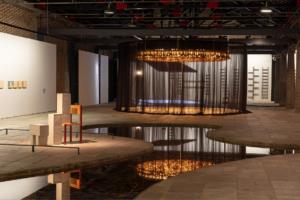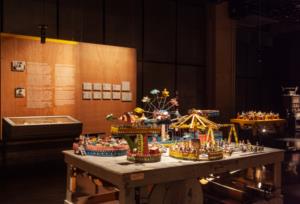(MENAFN- Brazil-Arab News Agency (ANBA))
São Paulo – Lebanese-Brazilian architect Alvaro Razuk (pictured above) is a reference in art exhibition design projects. His , which is currently located in Largo do Arouche in São Paulo and named after him, has created exhibition projects for artists such as renowned photographer Sebastião Salgado and Adriana Varejão.
To get to that level, the architect recounts he first learned he could focus his work on scenarios and museums over two decades ago. 'When I started, it was by chance, as a friend called me to do an exhibition. I didn't even know this kind of job existed. I was thrilled and then I focused on that, trying to guide myself to this field. Little by little, I started meeting more people and getting more jobs with relative success. Now I'm well established,' he told ANBA.
Arab descent
The first of his family to work with architecture, Razuk's both parents are Arab descendants. 'All my grandparents came from Lebanon, except for my paternal grandfather, who came from Syria, and a grandmother who were already born in Brazil. But overall, I'm the second generation in Brazil,' comments Razuk, whose most profound influence came from the cuisine and the Arabic. 'The language was because of my mother. She actually spoke Arabic. But I used to speak just a few things, as it's quite different from Portuguese,' he points out.
Dubai
Overseas, his office has some jobs in different countries, including France, Canada, Angola and Mozambique. The architect hasn't visited any Arab countries yet, but he has received an invitation that could help him change that.
'We were invited to design an exhibition in Dubai on Oscar Niemeyer. The idea is addressing the works that he as a Brazilian [architect] developed in Arab countries, such as in Tripoli, Lebanon,' said Razuk. The project is being aligned, but the invitation came from the Niemeyer Foundation, and the exhibition is expected to take place in the United Arab Emirates next January.
Designing art exhibitions

An exhibition designed by Razuk, 'Entrevendo' by Cildo Meireles at SESC Pompeia
Since his first job in the field in 1996, Razuk came to direct museographic, scenic and architectonic projects in Brazil and elsewhere. Making art pieces into exhibitions is a task for robust staffs, and the architect says he deals with professionals from different fields to orchestrate the teamwork. 'The project merges many other fields. You give shape to it,' explains Razuk, who works with different teams at each project.
The projects involve electricians, curators and conservation teams, who write a report on the art pieces. The latter work together with the architect checking details such as the light incidence on delicate works, which cannot surpass certain limit values laid down by the museology. 'An old paper document, for example, cannot get an incidence over the limit allowed, so this is an issue, too. The creative part has to be developed with a technical eye. It's like in civil architecture. We need to think on the venue's structure to develop the project,' he explains.

Projects are assessed by a conservation staff. Here you see Oficina Molina by Palatnik at SESC Avenida Paulista.
Local SESC Avenida Paulista
With over two decades of experience, the architect has seen developments in the field over the years. 'I increasingly see accessibility seen as a staple. Museums have elevators and accessible spaces. I believe Brazil stands out in this aspect compared to other venues I visited elsewhere. Even in exhibition, there are more and more museums searching for interactive works that can empower people with some disability. It's important they can visit that space in an autonomous way,' he said, point out the relevance of affirmative action efforts for Blacks, transgender people, and other minorities.
In the pandemic, another trend the Brazilian has seen is hybrid exhibitions. 'The exhibition I'm doing with [maestro] João Carlos Martins is forecast to open in mid-June, and they asked me to start thinking in an online version. Due to the pandemic, this has become crucial,' he explained.
The online project, Razuk stresses, is a very different work from in-person exhibition design. 'The idea is not having just a 3-D tour. We are thinking in a way to view the content in an interactive, interesting way,' he finished.
Translated by Guilherme Miranda
Everton Ballardin/Press ReleaseEverton Ballardin/Press Release
The post appeared first on .
MENAFN15042021000213011057ID1101925302
Legal Disclaimer:
MENAFN provides the information “as is” without warranty of any kind. We do not accept any responsibility or liability for the accuracy, content, images, videos, licenses, completeness, legality, or reliability of the information contained in this article. If you have any complaints or copyright issues related to this article, kindly contact the provider above.